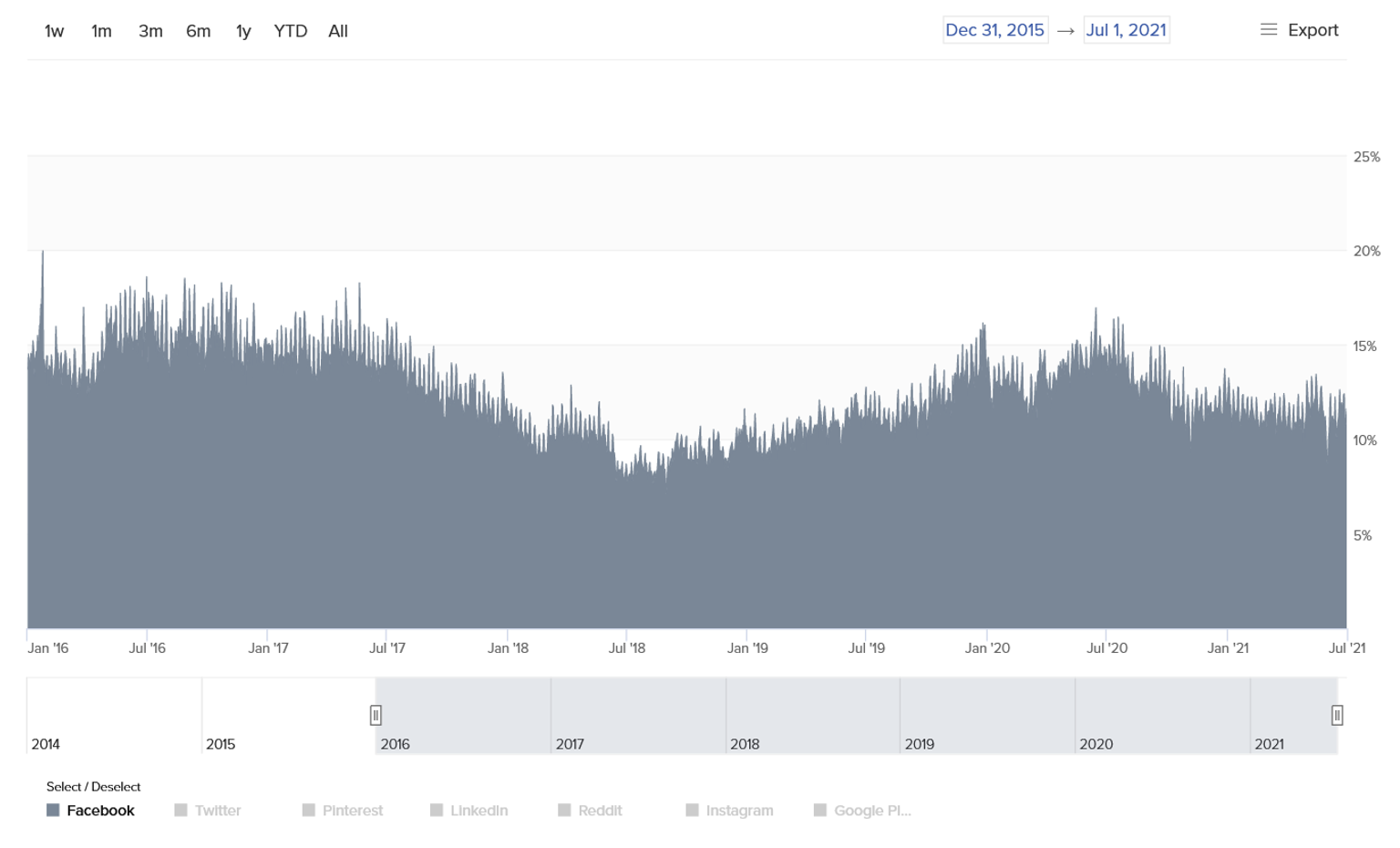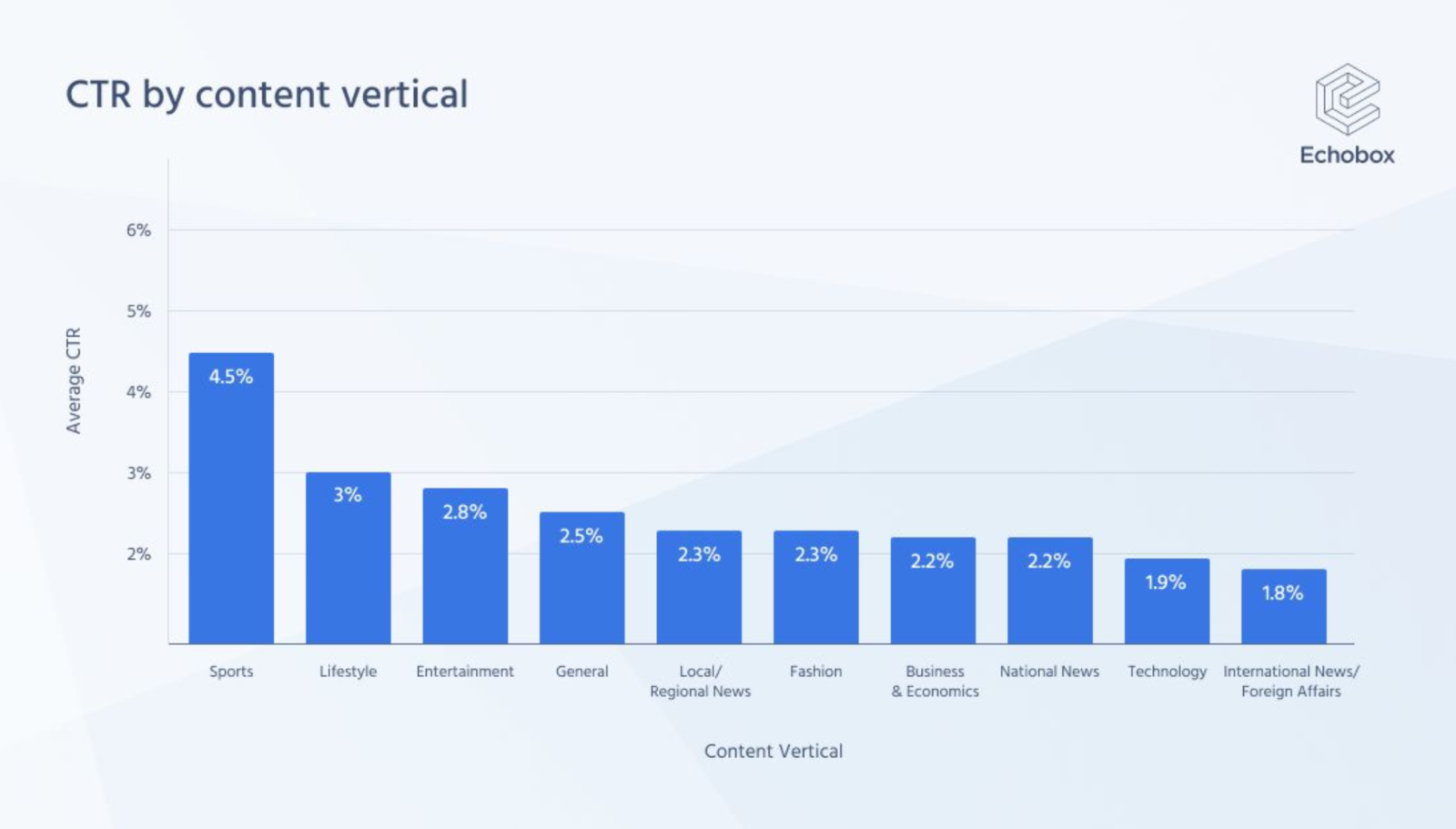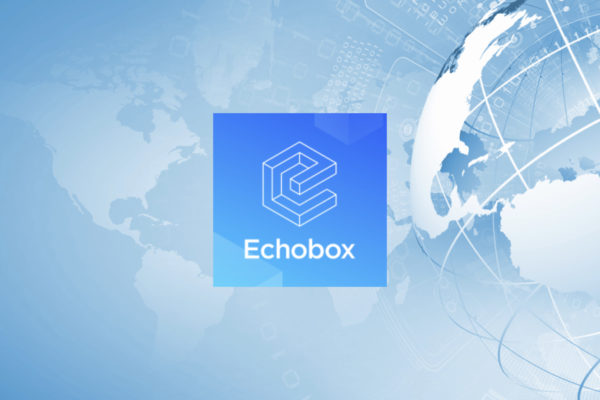Echobox: Remember that Facebook is still driving significant traffic to publisher sites
We’ve looked many times in recent months at the increasing friction between publishers and platforms. But for Echobox, a company that helps more than 1,000 publishers in over 100 countries to track and optimise their social media traffic, the ecosystem remains symbiotic. Here, in this exclusive interview for FIPP, Ashley Kibler, Senior Content Manager for Echobox, talks us through the company’s Social Media Index, the latest Facebook click-thru rates, and the enduring publisher-platform relationship.
Founded in 2013, Echobox uses AI to simplify the journalistic process, principally around social media. At a time when it has become fashionable for publishers to talk about ‘getting off social altogether’, the company emphasises the important role that channels like Facebook still play in generating traffic to media sites.
Working with brands like The Guardian, The Telegraph, South China Morning Post, Le Monde, Newsweek, New Scientist, Conde Nast and more, Echobox provides a variety of tools to help publishers enhance their social play. So how exactly does it work?
“In a nutshell, we enable publishers to drive the most referral traffic possible from social media, all while streamlining the process for them and saving time,” says Kibler. “These businesses can use Echobox Social to organise, schedule, and cross-post on Facebook, Twitter, Instagram and LinkedIn. They can also maintain an archive from which they can select their best-performing content for reposting.”
“But the real value lies in our cutting-edge AI technology, through which publishers can intelligently manage the entire social media publishing process: selecting which articles are most likely to go viral, determining the right volume of content and the right time to post, writing optimised share messages and selecting the best image. Everything is posted automatically, and this is Level 5 automation – equivalent to that used in driverless cars.”
Over 50% of posts made through Echobox are fully automated, with no human input. The company estimates that this can save the average user up to 4 hours per day, but also recognises that different media owners are keen to retain different levels of manual control.
“We sometimes see publishers who are a bit apprehensive about relinquishing control to an AI, at least at the outset. And it was important to us for Echobox to be completely flexible, so that publishers can use the AI-driven features as much or as little as they want. While some of our clients have fully automated their social media posting, others use Echobox to automate just certain accounts, so their teams have more time for their main social pages. Many use us for their out-of-hours posting, so they can reach audiences in other time zones.”
There’s an accessible API that allows publishers to retrieve real-time social media data from across platforms. Audience engagement with articles on-site is combined alongside social interactions in a centralised dash, and the Echobox algorithm – and company support that is provided alongside it – is customised for each specific client.
The Social Media Index
One of the headline pieces of research that the company puts out on a regular basis is The Social Media Index. This shows the amount of traffic being driven to the online publishing industry as a whole via social media every day.
“It’s based on data we aggregate across publishers globally,” Kibler tells us, “and it’s the first real-time index of this kind to show the impact of social media on online news consumption. It’s fascinating data that reflects our world and all of us, so it was important for us to make this data available to everyone, whether you’re a journalist, academic or a member of the general public.”
“Anyone can use this data to identify spikes and patterns in social media traffic and look at how trends have evolved over time. It’s available as far back as 2014 and shows traffic from seven major social media platforms. There’s also an overlay of current events so you can see how certain major news items may have had an impact on traffic from social media. And anyone can export the data as a CSV file for deeper analysis.”

Some key insights from the company’s research over the past couple of years include:
- Facebook traffic levels were higher in 2016-17, declining in 2018, most likely as a result of the platform’s highly publicised algorithm change.
- Nonetheless, they recovered slightly in 2019, and have generally plateaued since then…
- Aside from a notable pandemic-related uplift in the spring and summer of last year, when the platform was responsible for one in seven pageviews.
- Overall, Facebook continues to drive the lion’s share of social referral traffic: in 2020, over 13% of all traffic to news publishers’ sites came from the platform.
- To put that into perspective, the second biggest traffic driver amongst social platforms is Twitter, which drives less than one-tenth of the traffic that Facebook does.
- Twitter traffic itself has remained relatively stable throughout the last few years, though appears to be showing a slight downward trend since last summer.
Facebook Click-thru rates
The Social Media Index therefore tells us that there is still traffic value to be had in posting on social platforms, particularly Facebook, but just what exactly do the click-thru rates look like?
Well, in June of this year the company published a separate study looking specifically at Facebook click-thru rates. Analysing 6.5 million organic shares from 500 publishers worldwide, Echobox found an overall click-thru rate of 2.5% from posts served on Facebook. Magazines recorded the highest CTRs of any publication type, at 2.8%. The study also recorded significant variance between different types of content, with sports achieving 4.5%, while international news and foreign affairs publications showed a CTR of 1.8%.

It’s the first time that Echobox has made some of its industry-wide performance benchmarks publicly available, and is now looking at an even further deep-dive into how Facebook CTRs have changed in recent years.
The publisher-platform relationship
Of course, as stated at the top of this article, it cannot have escaped anyone’s attention that there has been increasing friction between publishers and platforms like Facebook and Google in recent years. We recently spoke with Stuff CEO, Sinead Boucher for example, who talked about the publication’s decision to leave Facebook last year, as well as the media bargaining code that was introduced in Australia in 2021.
But as Kibler – and the data – highlights, there is life in the old publisher-platform relationship yet:
“We can tell you that organic traffic from social media is very much still alive and kicking. And in fact, the majority of social media traffic for publishers we work with comes from their organic posts, not from paid or boosted ones. Despite the contentious relationship between publishers and platforms, there’s no denying that social media, and Facebook in particular, is still a key source of traffic for publishers.”
“Not to mention that social platforms enable publishers to reach new audiences and tap into different demographics, especially in the case of Instagram and TikTok, which have both seen their popularity rise with audiences in recent years. So even if there are elements of distrust or animosity towards social platforms, most publishers will acknowledge that social media is likely to remain an imperative part of their distribution strategy.”
Finally then with that said, how can publishers go about striking the right balance with platforms in 2021 and beyond?
“Facebook wants to keep users on its platform for as long as possible, which is incompatible with a publisher’s objective of driving referral traffic back to their own website. We’ve seen Facebook recommend certain features or practices to improve performance, such as using interest tags or publishing a mix of photo posts and link posts.”
“But we always assess these recommendations from the publisher point of view, study them scientifically, and then leverage our technology to enable publishers to maximise the benefits from social media in a way that protects their own interests, rather than Facebook’s. It comes down to using social media intelligently to reap the benefits of traffic and reach while avoiding being at the total mercy of these platforms.”










